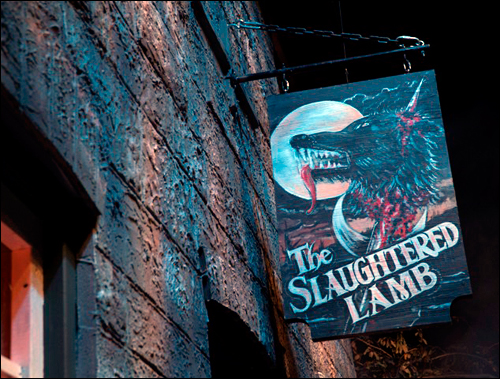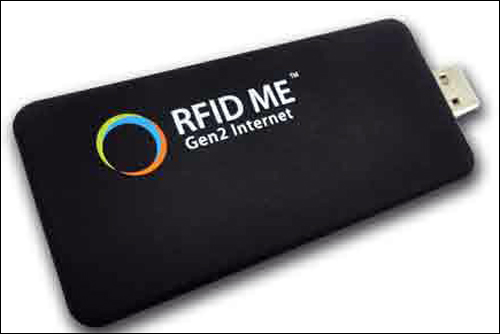This year’s Halloween season promises to be more entertaining than last year’s for guests at the Universal Studios Florida theme park, thanks to the park’s expanded use of radio frequency identification technology.
Universal Studios Florida has produced Halloween Horror Nights each autumn since the event’s 1991 launch. Initially, the experience consisted of walking past “Scareactors” and spooky props inside haunted houses, but during the past few years, the theme park introduced an Internet-based aspect of the event, known as Horror Unearthed, in which players could face online challenges and earn reward points, competing as individuals as well as in teams.

Last year, the Internet-based game was linked to the physical event at the theme park via passive ultrahigh-frequency (UHF) RFID tags and readers (both fixed and mobile) supplied by Taiwanese technology company Microelectronics Technology Inc. (MTI), as well as the theme park’s own software for managing read data and linking it to game-based responses, which were stored on the players’ personal accounts and sent to those individuals’ phones via e-mail or text messages. The Universal Orlando Resort‘s entertainment technical and art and design divisions worked together to develop the game software, and to link each RFID tag and read event with the points related to a particular reader.
Users created an ID and password on the Horror Unearthed Web site. Upon visiting the park, each player could then acquire an RFID-enabled tag linked to that ID. Readers stationed around the park interrogated that tag as the visitor accomplished specific missions, such as making his or her way through a haunted house or finding a specific character using a mobile reader, and the points earned were then added to that individual’s account. Guests could continue playing the game throughout October, either online or during repeated visits to the park’s haunted houses. The RFID features drew such a favorable response, says TJ Mannarino, the senior director of art and design in Universal Orlando Resort’s entertainment division, that the technology is again being offered this year, with additional capabilities.
Prior to selecting the technology last year, the Universal Orlando Resort’s entertainment technical team evaluated approximately 50 different styles of tags, as well as multiple readers, in both active and passive systems. They also built mock-up stations within the design offices to simulate game play at the park. Based on the test results at those stations, the group selected MTI’s RFID ME USB Dongle reader installed in PCs, as well as the company’s MiniMe reader plugged into Google’s Nexus 7 tablets, to read passive EPC Gen 2 tags inside plastic cards.
According to Mannarino, when this year’s event—Halloween Horror Nights 23—opens on Sept. 20, it will utilize the same readers, but include additional RFID-enabled features.
To play this year’s online game, known as LegendaryTruth: The Collective, participants will begin by visiting the LegendaryTruth Web site, creating a login ID and password, and selecting one of six “legions” to which they will pledge their allegiance, such as Cerebin (the beasts) or Baccanoid (the warriors). Sometime later this week, players should be able to sign up, Mannarino reports, with the game expected to become active early next month. Other participants from the same legion will then play with them online, as well as in the park.
Last year, if Horror Unearthed players visited the park and wished to participate in the RFID-based elements of Halloween Horror Nights 22, they visited a registration booth, picked up their card and provided their Web-based user ID, linked to their e-mail account or mobile phone number, so that they could receive messages on their phones while playing the game. For Halloween Horror Nights 23, a passive UHF RFID inlay will be built into the Frequent Fear pass—a plastic card that a visitor purchases in order to gain entrance to the haunted houses. The pass can then be reused every time that individual returns to the park’s haunted venue.
Kiosks equipped with RFID ME USB Dongle readers plugged into PCs are installed at the end of each of seven haunted-house mazes. Each guest passes his or her RFID tag over the designated logos, thereby indicating the location of that RFID reader antenna, while leaving the haunted house. The guest’s tag ID number is then forwarded to a Universal server running the LegendaryTruth software, where that individual’s score is updated in his or her account.

Guests can also try locating mobile readers based on online clues. This, Mannarino explains, was one of the most popular aspects of the game in 2012, and will be central to this season’s event as well. Last year, on the final night, Universal Studios Florida offered what it called the “Wild Goose Chase,” in which Scareactors dressed as game characters each carried a tablet computer with an RFID reader, and a player had to locate that character and have his or her badge read by the character’s reader in order to score points. He or she then received a text or e-mail message indicating whether the choice was correct or mistaken.
In addition to making the mobile readers a part of each night’s events, Mannarino notes, Universal Studios Florida is allowing this year’s players to earn special RFID tags, such as “freeze” and “fire” tags. A freeze tag, when interrogated by a reader, could prompt that device to cease reading any tags for 10 minutes, thereby thwarting competitors’ efforts. A competing player could then use a fire tag to reactivate the interrogator immediately.
While developing the system, Mannarino says, his team faced several challenges. Transmitting data from the mobile computers over a cellular connection proved difficult, he explains, because of the large amount of cellular traffic already in the park due to the many cell phones in use. To resolve this problem, the group installed mobile hotspots to boost signal strength.
In 2012, the Horror Unearthed online game had a total of 7,300 registered players, 1,000 of which also participated in the Halloween Horror Nights. Mannarino says responses from players to questionnaires about the event were some of the highest the company has ever received regarding a new project. “This has been a great niche—to create an experience of group play with hundreds of people playing together,” he states.


